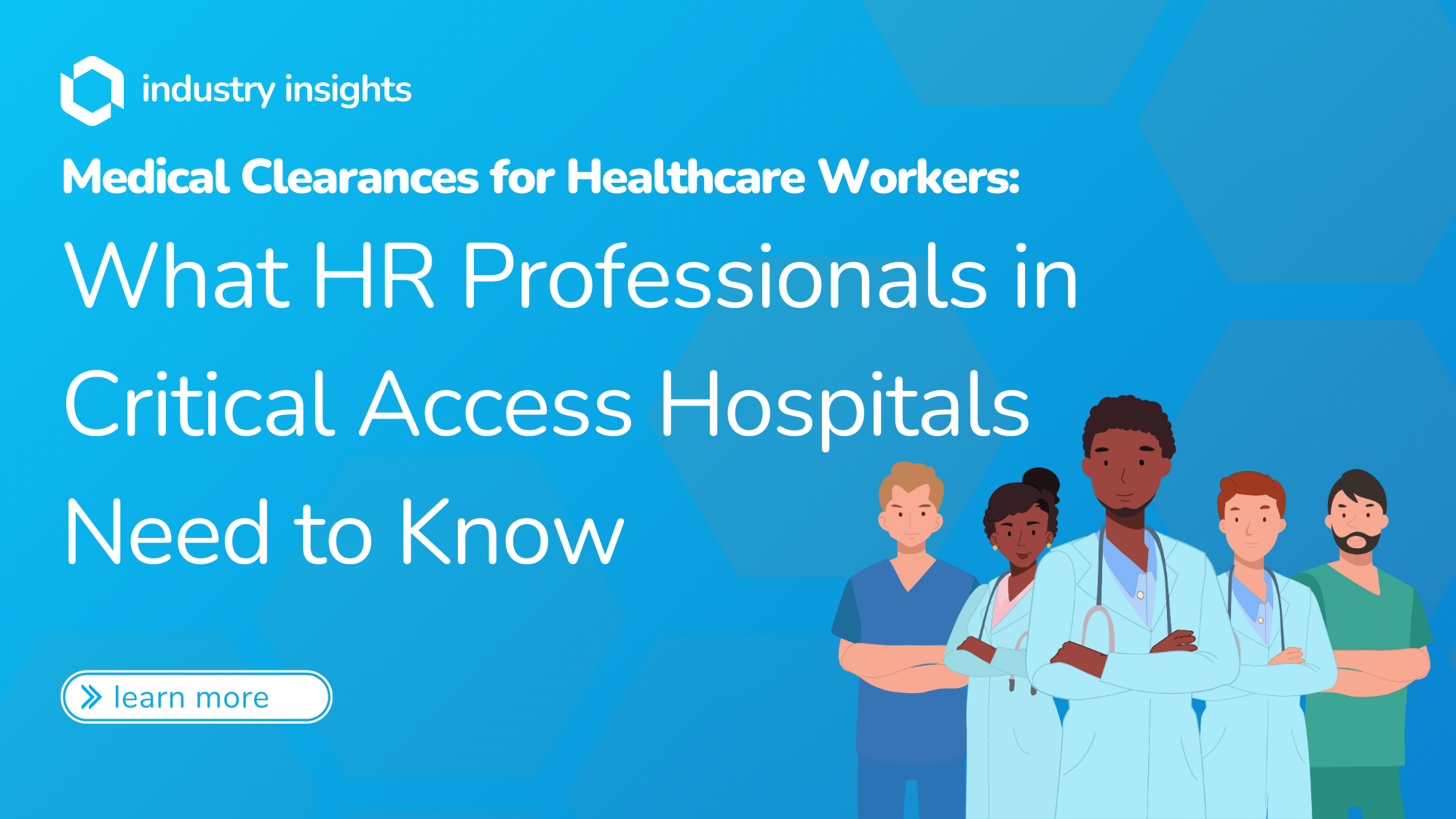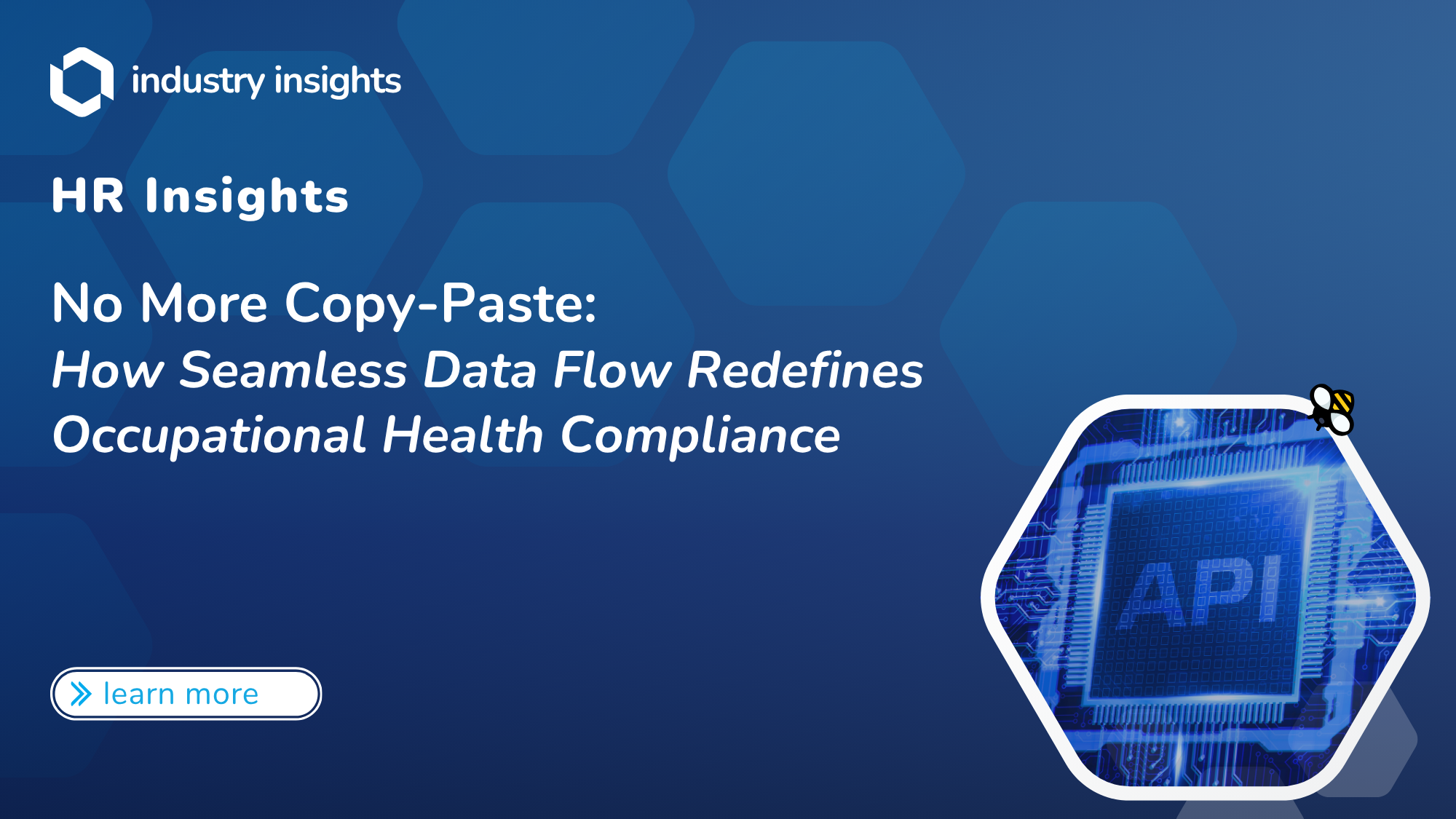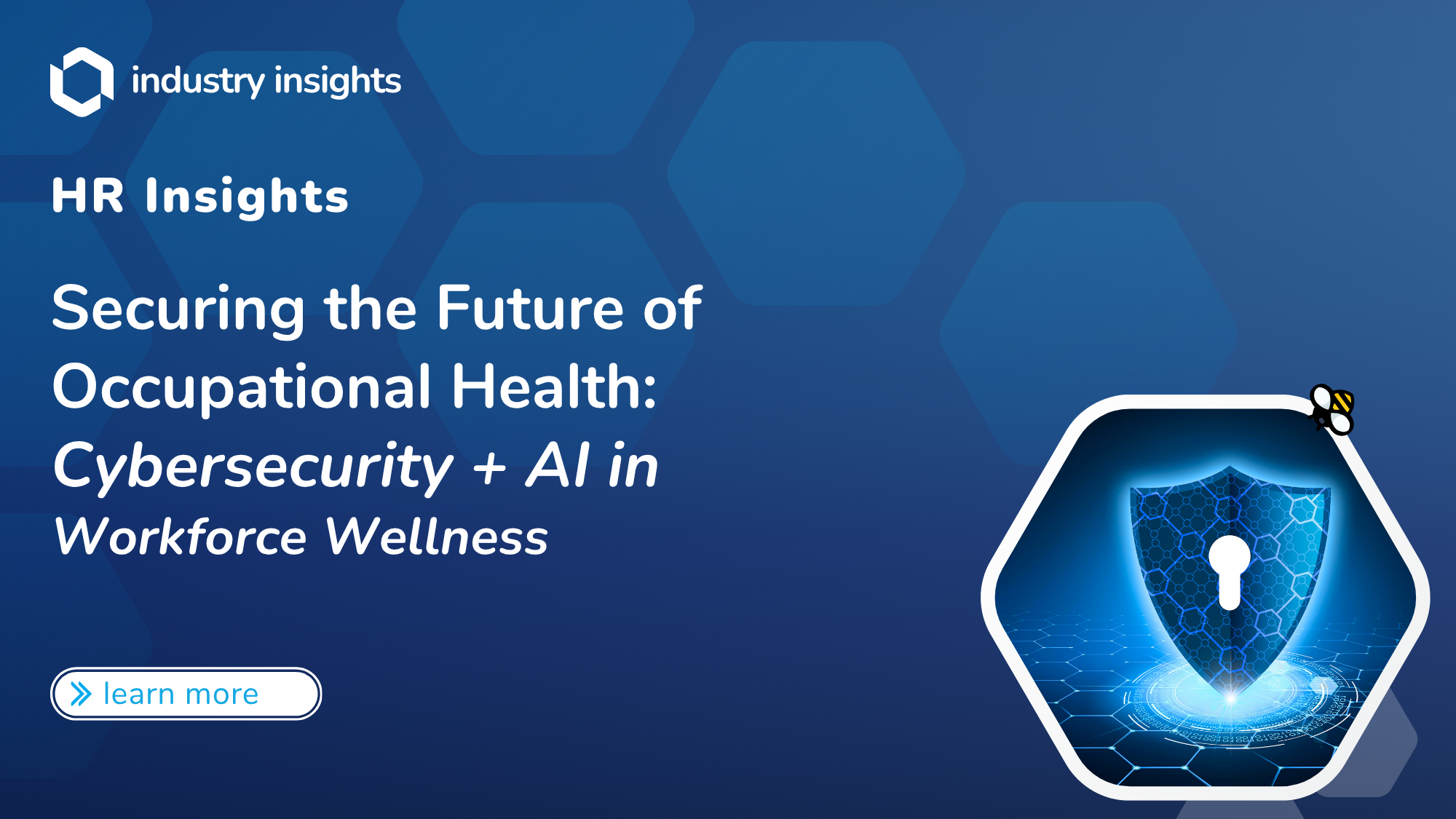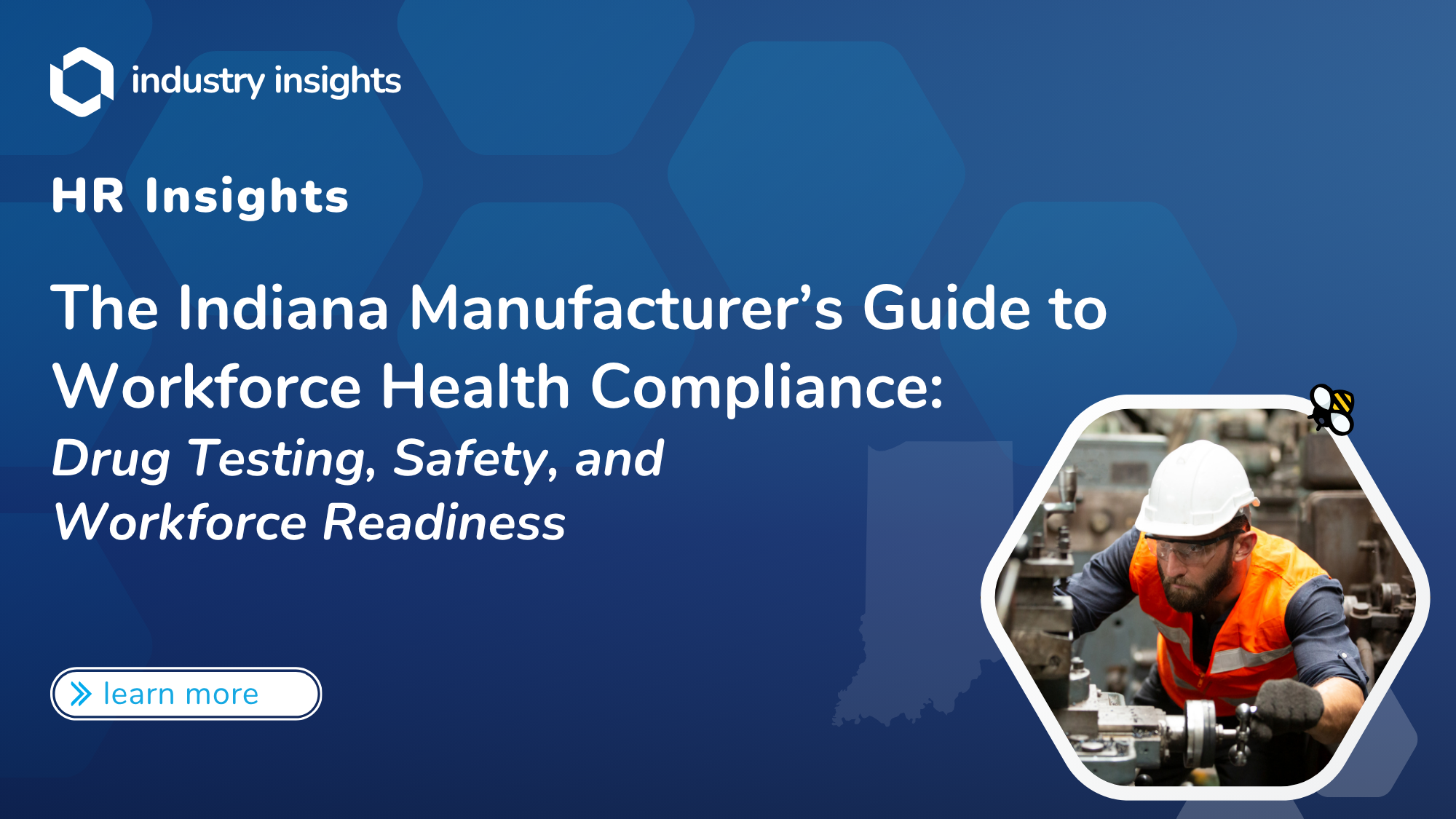In a constantly evolving healthcare ecosystem, one thing has remained unchanged – the need for healthcare professionals to complete specific clearances before starting employment and maintaining those credentials while employed. As HR professionals, it is often difficult to accurately track employee compliance promptly and efficiently while ensuring that our workforce remains healthy and available to work. This difficulty is compounded for those involved in human resources in Critical Access Hospitals (CAHs), which are often small, located in rural areas, and operating on a lean staff and budget (Centers for Medicare & Medicaid Services, 2024).
Understanding Medical Clearances
One of the most commonly referenced clearances regarding healthcare workers is immunizations against disease. Certain vaccinations are recommended by the CDC (Centers for Disease Control) and WHO (World Health Organization). Still, official requirements may vary from state to state and employer to employer, depending upon law and policy (Centers for Disease Control and Prevention, 2024).
In addition to vaccinations, many facilities require clinical staff to be CPR/AED or BLS/Basic First Aid certified, pass respirator fit testing, or complete specific physical exams or laboratory tests as conditions of continued employment.
One thing that all of these clearances have in common is that they are required for employment and that they all expire or must be recertified at specific intervals. As an HR professional in the healthcare field, you must ensure that all employees maintain compliance with employer, local, state, and federal guidelines with the least negligible impact on daily workflow.
The Role of HR in Medical Clearances
HR plays a pivotal role in ensuring that employees have completed all necessary certifications and maintain their credentials throughout their employment. While this is difficult in a typical hospital setting, your job in a critical access hospital is likely made even more difficult by your facility’s remote location and the pressing need to ensure that staff are available to maintain quality patient care (Rural Health Information Hub, 2024). From scheduling initial screenings, maintaining accurate vaccination and credentialing records, and working with providers to ensure that employees have access to the training and services they need, it’s no surprise that your responsibilities can sometimes feel overwhelming!
Potential Risks of Noncompliance
Many critical access hospitals operate under a multitude of challenges. Limited staff and time, geographical location, turnover and onboarding, and the many local, state, and federal requirements can quickly lead to employee noncompliance. In addition to legal consequences, financial penalties, and possible patient safety risks, noncompliance can also lead to staff shortages if employees are temporarily unable to work due to credential expiration. Examples of potential risks include but are not limited to:
- Cost of Temporary Staffing: Employees whose credentials have lapsed may not be eligible to work, resulting in a CAH utilizing costly temporary staffing services. This may place further strain on an already limited budget.
- Risks of Fines or Accreditation Loss: Noncompliance with state or federal guidelines can result in fines or potential loss of critical accreditations for the hospital. This could disrupt operations, as the hospital may lose access to funding or partnerships. In addition, decreased reimbursement for services may result if specific targets are not met.
Benefits of Proactive Workforce Health Management
So far, we’ve given a quick overview of medical clearances, your role as an HR professional in ensuring that employees are appropriately credentialed, and some of the risks of non-compliance. Now, let’s look at a couple of benefits of taking a proactive approach to ensuring your employees remain healthy and cleared to work.
- Preventative Health as Compliance: Credentialing goes hand in hand with maintaining a healthy workforce. Regular health checks and vaccinations fulfill state and federal requirements, reduce absenteeism, and ensure that your employees are healthy and ready to provide the best quality of care for your patients. These health checks can also identify potential health risks before they become a liability or result in employee harm.
- Reducing Burnout and Turnover: Credentialing and compliance systems that are user-friendly and efficient can ease the burden on staff. This can contribute to higher job satisfaction and a lower turnover rate, both of which are significant issues for CAHs.
Potential Best Practices for Effective Credential Management
You can implement several practices to ensure that your hospital’s employees remain compliant.
- Automating Reminders: Setting up a spreadsheet or calendar with automated reminders of expiring employee credentials can help you track what needs to be scheduled and when, helping you avoid missing deadlines and reduce last-minute scrambles.
- Establish Partnerships with Occupational Health Providers: In remote areas served by critical access hospitals, it is crucial to cultivate relationships with local providers to ensure that your employees have simplified access to scheduling for tests, vaccinations, and exams.
- Creating a Centralized Record System: One of the most complex parts of ensuring compliance is accurately tracking employee results. While some testing and examinations are reported directly to the ordering employer, some items are also provided directly to the employee, who must then submit those credentials to HR for tracking. Creating or utilizing an already existing record system is critical in ensuring that your facility and employees remain in compliance.
What Role Can BlueHive Play in Credentialing Management?
As a leader in occupational health management, BlueHive provides helpful tools to ensure that your employees are not only healthy and ready to work but also cleared medically and professionally. BlueHive offers:
- Health Service Management: BlueHive’s nationwide network of providers ensures that employees can be quickly scheduled for health screenings, tests, vaccinations, and other credentialing with ease.
- Employee Tracking: Our custom-built platform allows you to easily track employees’ credentials, when those credentials expire, and allows HR professionals to schedule needed services directly through the employer portal.
- Customizable Alerts: With automated alerts, BlueHive’s employer dashboard keeps you informed long before employee credentials expire, giving you time to ensure that you stay ahead of deadlines and don’t have to try to schedule last-minute appointments.
- Data Storage and Security: In addition to helping you schedule employee screenings, BlueHive’s platform allows you to maintain an employee database, store employee results, and obtain real-time reports. BlueHive is HIPAA-compliant and utilizes secure, redundant storage to ensure that none of your essential employee data is lost or exposed to bad actors.
Conclusion
In today’s demanding healthcare environment, ensuring compliance is essential for patient safety, staff well-being, and hospital operational efficiency. This is made all the more challenging for HR professionals in critical access hospitals due to limited resources, rural locations, and staff shortages. By adopting best practices in credential management, your team can streamline the initial credentialing process, as well as required maintenance, ensuring that employees are ready and able to assist in patient care.
By leveraging BlueHive’s centralized employer dashboard, you can streamline compliance tracking, reduce the risk of noncompliance, and build a healthier, more resilient workforce. Thanks to BlueHive’s innovative platform, nationwide network of providers, and automated alerts, setting yourself up for success has never been easier, and you’ll empower your team to focus more on delivering quality care!
Sources
Centers for Disease Control and Prevention. (2024, May 15). Vaccination laws. https://www.cdc.gov/phlp/php/publications/vaccination-laws.html
Centers for Medicare & Medicaid Services. (2024, September 10). Critical access hospitals. U.S. Department of Health and Human Services. https://www.cms.gov/medicare/health-safety-standards/certification-compliance/critical-access-hospitals
Rural Health Information Hub. (2024, October 25). Critical access hospitals. https://www.ruralhealthinfo.org/topics/critical-access-hospitals




